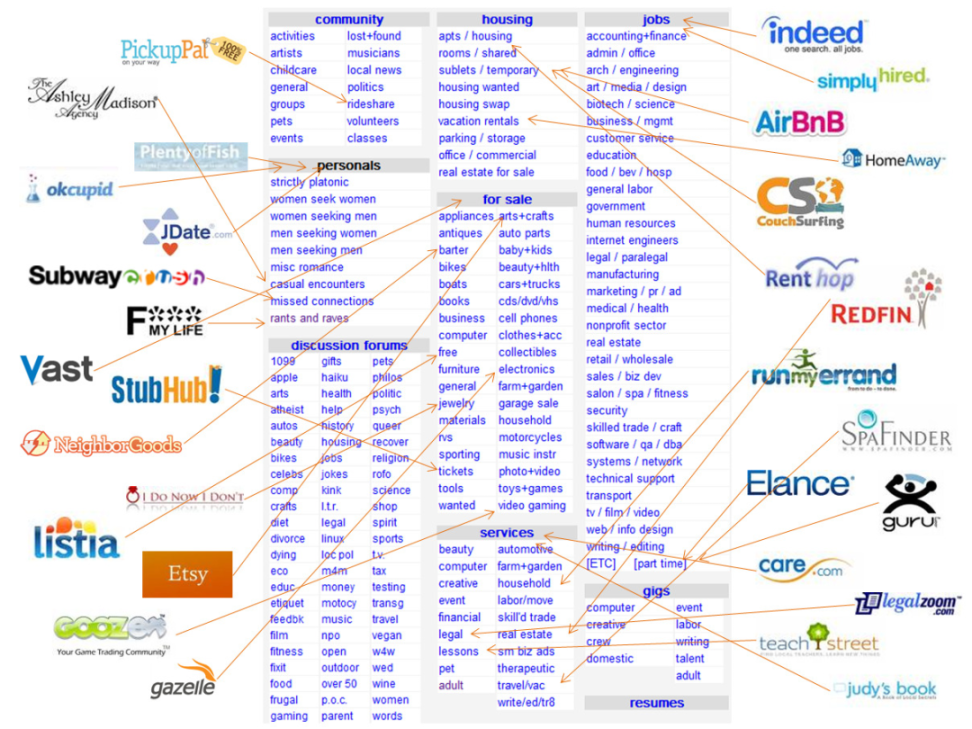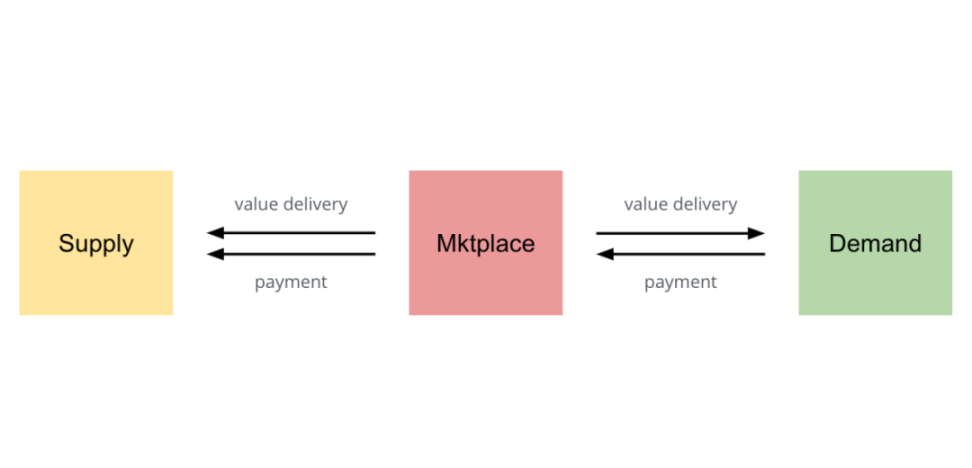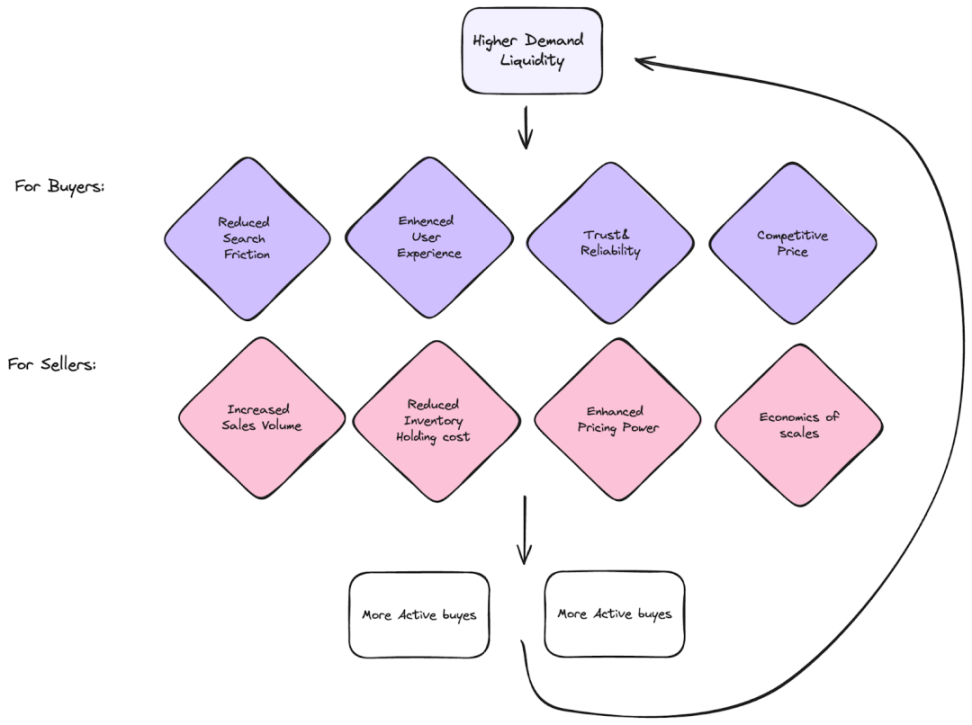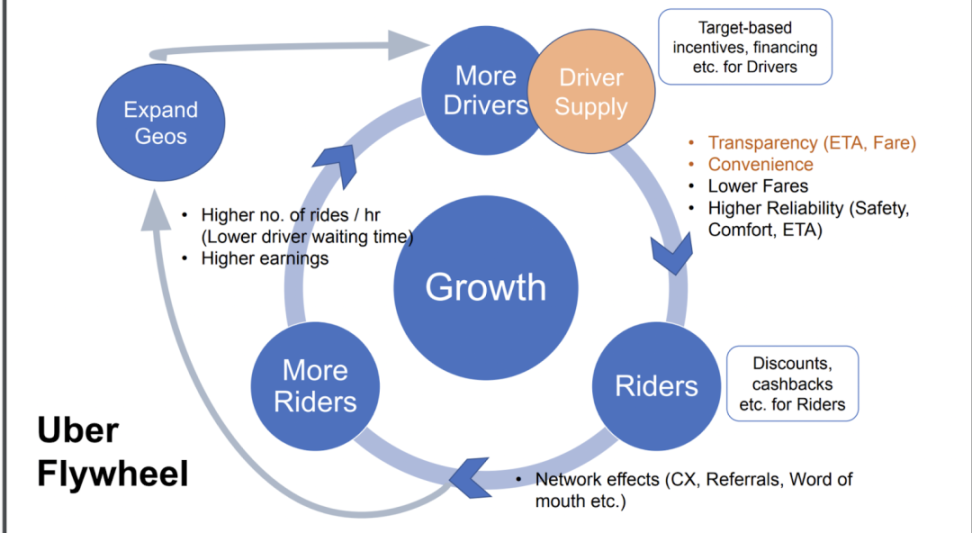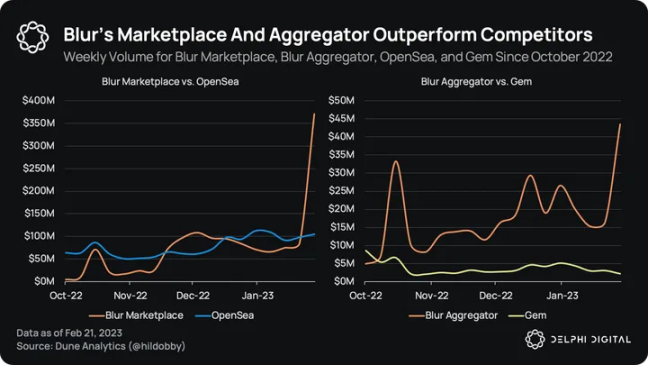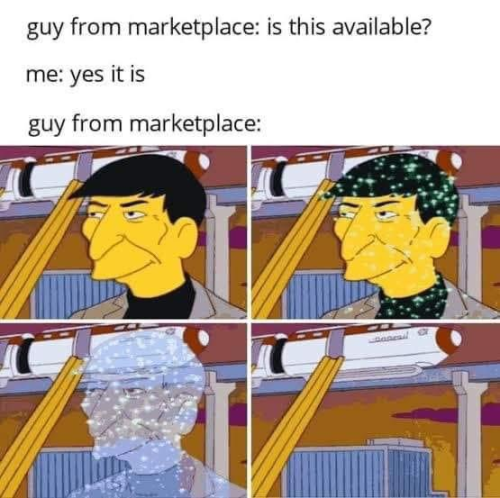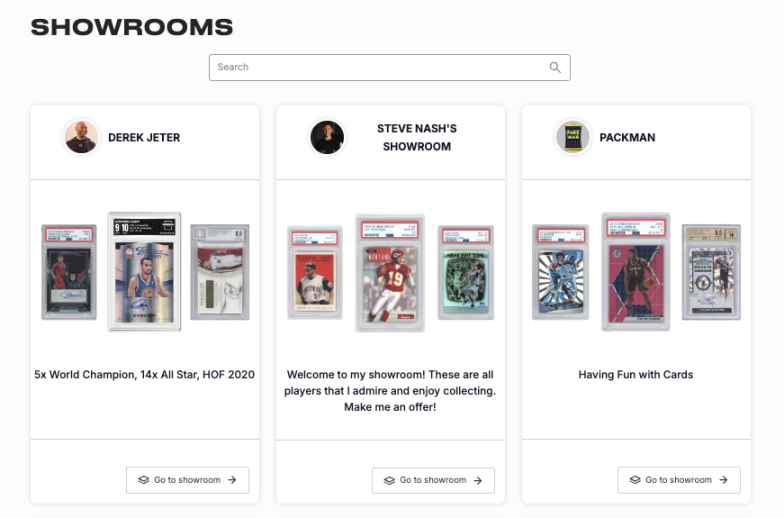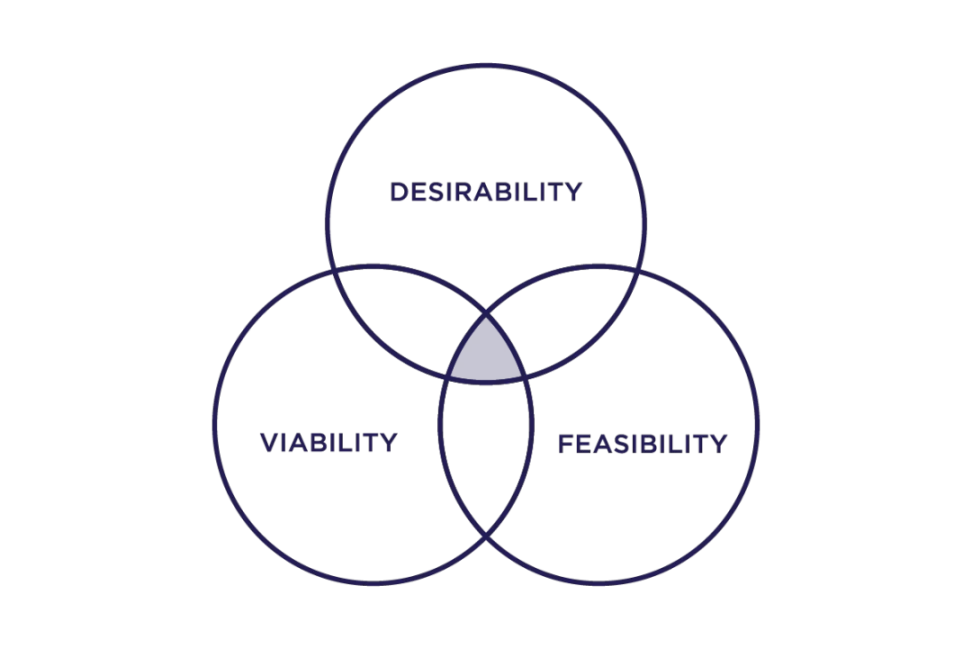IOSG Ventures: من Web2 إلى Web3، الموجة التالية من تطور Marketplace
المؤلف الأصلي: IOSG Ventures
1 المقدمة
Over the past two decades, with the rise of e-commerce, the explosive growth of social media, and the popularity of mobile Internet, Web2 market platforms have experienced remarkable development. Craigslist was launched in 1995 and connected various needs, from community activities to housing rentals, to jobs and services, in a simple and efficient way. Subsequently, one online platform giant after another quickly emerged, simplified the transaction process, connected supply and demand more efficiently, and expanded rapidly in their respective fields with network effects, replacing many categories of Craigslist, and creating new business models and services through specialization and segmentation. Airbnb has disrupted the accommodation industry, Redfin has reshaped the real estate market, and Indeed and LinkedIn have completely changed the way of job hunting and recruitment. Every time peoples lifestyles change and technology upgrades, the market platform track will always have leading companies emerging, which will completely change the consumer experience by providing unprecedented supply and demand connection efficiency, and achieve a strong flywheel effect and a deep moat.
Web2 platform vs. Craigslist, Souce: The Gong Show
However, as these Web2 market platforms mature, they are also beginning to face increasingly obvious bottlenecks. Lack of innovation, monopoly by giants, high intermediary fees, complex cross-border payment processes, data privacy issues, and lack of transparency are limiting the future growth potential of these platforms.
Many platforms have imposed platform fees of up to 20-40% (for example, Apple charges a 30% commission on all sales on the App Store), which directly affects the profitability of small suppliers and weakens the demand of traditional consumers. Data privacy issues have also become increasingly prominent. In 2023, there were 3,205 data breaches in the United States, affecting millions of users. A survey showed that 73% of consumers are more concerned about their data privacy than a few years ago, and 89% of consumers no longer trust brands to handle their data correctly, which has greatly reduced users trust in the platform. In addition, monopolistic behavior has also raised concerns about fair competition and user rights. The centralized nature of the Web2 market allows platforms to exert too much control over products and services in the market. For example, Amazon has been accused of abusing internal data and biasing search results for its own brands.
In this context, the emergence of Web3 technology has brought about revolutionary changes. Decentralized networks and token economies are expected to address the inherent limitations of these traditional systems in the underlying supply and demand links of the Marketplace. At the same time, unique technologies (RWA, interoperability, on-chain reputation, and DAO, etc.) can also add icing on the cake to traditional functions and user experience, reimagine the foundation of digital commerce, open up new business models, and promote new network effects.
2. Marketplace Basic Structure
For businesses, the market platform is a comprehensive ecosystem that provides order fulfillment, payment processing, logistics services, and data analysis. For consumers, the market platform allows them to quickly browse, compare, and shop from a wide range of goods and services. Back to the essence, Marketplace is an intermediary that connects the demand side (end consumers) and the supply side (sellers or suppliers). It makes profits by charging a certain percentage of the transaction as a commission or service fee, or charging additional fees for providing value-added services (such as payment processing, product delivery, and customer support). The core function is access and visibility, providing a platform where sellers can reach a wide audience and buyers can easily find the goods they need. Improve efficiency by aggregating supply and demand, reduce search and transaction costs, and achieve trust by providing certain security mechanisms such as evaluation systems, escrow services, and dispute resolution.
Source: LinkedIn
A successful Marketplace platform is inseparable from:
1. Demand Liquidity: The ability of the platform to quickly match and meet the needs of buyers and sellers. High demand liquidity means that the platform can respond quickly to user needs, reduce transaction friction and waiting time, and improve satisfaction. For example, Uber can find the nearest driver for passengers in a short time through its algorithm and huge driver network, thereby providing efficient travel services. Dexs AMM mechanism provides continuous liquidity through algorithms and liquidity pools, making transactions faster and more convenient. More innovative mechanisms such as Pump.funs Bonding Curve not only improve market liquidity, but also ensure dynamic price adjustments and automated market operations, attracting more users to participate in transactions.
For buyers, high demand liquidity means less searching, lower prices and better user experience; for sellers, it means higher sales, lower inventory costs and better pricing power. Both promote each other to achieve incremental trading activities and better profits on the platform.
Source: IOSG
2. Compound Nature of Demand: On a successful Marketplace platform, an increase in demand should be able to trigger further demand growth, thus forming a self-reinforcing flywheel. When demand on the platform grows, the ensuing trading activities should be able to quickly stimulate a growth response in supply, which can not only improve the diversity and quality of products, but also enhance user experience and even trust in the platform to achieve brand effects, further drive network effects, and continuously increase the overall value of the platform. Only by efficiently achieving this flywheel effect can the Marketplace platform maintain a long-term competitive advantage by continuously improving and innovating, constantly adapting to and meeting user needs.
Uber Compounding Flywheel, Source: LinkedIn
Take the competition between Blur and OpenSea as an example. In addition to the advantages brought by airdrop incentives, Blur has launched products with more precise PMF to meet the needs of major NFT market volume contributors (professional traders). Advanced sweeping tools that allow traders to purchase NFTs in bulk, aggregate lists from multiple markets, faster transactions, and lower Gas fees improve demand liquidity. In addition, the Bid Wall, which was first launched by Blur, allows users to bid in bulk within a specific price range. This mechanism makes it easier for sellers to find buyers, reduces price fluctuations, and improves transaction efficiency and liquidity. With these advantages, Blur quickly increased its average daily sales in a short period of time and now occupies 63.1% of the NFT Marketplace market share. Higher demand liquidity has driven further growth in demand, forming a self-reinforcing flywheel effect and consolidating Blurs position in the market.
Source: Delphi Digital
المصدر: Dune
Optimizing supply and demand is an essential element for the success of traditional market platforms, which is crucial for us to explore the potential of Web3 market platforms. How Web3 technology can optimize the supply and demand link and economic benefits, making it more valuable and efficient for all participants, and further innovate the platforms operating model and economic effects, is the focus of this article.
3. How Web3 empowers Marketplace
3.1 Decentralization: User Data Control and Censorship Resistance
Traditional centralized market platforms not only have the risk of user data abuse, but are also easily manipulated and censored. E-commerce giants such as Amazon not only have a grasp of users shopping habits and search records, but also use these data to prioritize the display of their own products and even manipulate prices. Scandals like Facebooks Cambridge Analytica scandal directly expose the huge risk of user data being abused. In addition, in recent years, platforms such as eBay have been under pressure to remove or block content when dealing with controversial products posted by users, sparking widespread discussion about platform censorship and content control.
The Web3 Marketplace is built and runs on a distributed network of nodes. Reducing reliance on a single intermediary improves the security and censorship resistance of the system, which means that users have greater control over their data. The ability to decide what to share and ensure that their transaction information is not affected by centralized leaks is consistent with users growing demand for data privacy and control. The advantages of decentralization are an important development direction for Web3 Marketplace.
The previous obstacle for decentralized المتجرs was the inability to achieve a user experience comparable to that of traditional markets. However, today鈥檚 technology and macro-environment have undergone tremendous changes. Layer 2, cross-chain, DID, NFT, chain abstraction, etc., combined with Visa and Mastercard starting to support cryptocurrency payments, and more and more DeFi platforms seeking compliance certification, are all promoting the realization of Mass adpotion. The future decentralized market will be able to shorten the gap with the traditional market, overcome past obstacles, and achieve wider application and popularization.
3.2 Transparency and Immutability: Revolution in the Collectibles Market
The transparency and immutability of the underlying blockchain technology also show great potential in the collectibles and luxury goods markets. The technology for tracing the origin of luxury goods can reduce the traditional lengthy verification and transaction processes, making transactions more efficient and transparent. For example, Courtyard.io, which specializes in sports memorabilia and collectible card transactions, creates an immutable digital record for each item, tokenizes physical collectibles (such as jewelry, luxury goods, and artworks) through blockchain technology, and stores them in secure facilities. Each collectible is bound to an NFT (non-fungible token), and users can verify the authenticity and ownership history of the item, eliminating the complicated verification process in the traditional market while ensuring the safe storage and transparent transactions of the items.
3.3 Cross-border payments and global accessibility
In Web2, supporting cross-border payments requires international integration with various local systems. More than 80% of YouTube users live outside the United States. To support local currency payments in each region, the platform must integrate with international payment gateways. Many platforms are unable to cover long-tail geographic areas due to lack of resources. But Web3 achieves unparalleled permissionlessness and global accessibility. Through the development of various expansion technologies, transaction fees have also been significantly reduced, lowering the barrier to participation.
3.4 Smart Contract and Asset Logic Embedding
Traditional Web2 market platforms have a problem of fragmented liquidity, which means that sellers must list and price items separately on different platforms, resulting in decentralized liquidity, poor user experience, and often high transaction fees. However, in Web3 market platforms, smart contracts allow digital assets to be sold, traded, and displayed efficiently on multiple market platforms. Through this liquidity aggregation, sellers can pool resources to sell goods at more competitive prices, and buyers can enjoy more favorable transactions.
In addition, the programmable nature of digital assets allows logic to be embedded directly into assets, rather than relying on applications that control assets, providing the possibility for innovative business models and more flexible asset management. Compared with traditional markets, better empowerment of commodity owners or creators is achieved. Most NFT markets today have such logic embedded in them, such as what blur and zora have done, which embeds royalty logic in NFTs to achieve a continuous income stream for creators in each secondary sale, which is difficult to achieve in the traditional art market.
Source: Messari
3.5 Token Incentive Mechanism and Economic Model
The underlying essence of a market platform that allows buyers and sellers to quickly reach a transaction is that there is a sufficient base of buyers and sellers in the market. For traditional platforms, attracting initial users and supplying the cold start problem is usually a major challenge. Before reaching a certain scale, the value of a Marketplace platform is very small.
Source: Reddit
Traditional Marketplaces usually require huge marketing expenditures to solve this starting problem, but Web3 technology can solve this problem through token incentives. Through the growth and value creation of the token economics platform. This better than free business model can reward early participants, create a self-reinforcing ecosystem, and promote rapid user and supplier growth. The platform can also use the token economy to maintain user retention.
-
On the supply side: Goods or service providers can be rewarded with tokens by joining and contributing to the platform. These tokens can increase in value, providing an additional source of income. Various DePIN networks and other tokenized market platforms have successfully applied this model to overcome the cold start problem. For example, the Helium network attracts users to provide connection services for IoT devices by rewarding HNT tokens, and Filecoin attracts storage space providers through token rewards.
-
Demand-side attraction: Consumers are incentivized to use the platform through token-funded rewards, discounts, or user loyalty programs. This not only attracts initial users, but also encourages repeat purchases and long-term engagement. For example, some DeFi platforms attract users to provide liquidity through liquidity mining and yield farming, and increase user engagement and loyalty through token rewards.
Different types of Marketplaces can apply different token incentive strategies. According to different supply models, project owners can design targeted incentive mechanisms. Here we use the two types of markets defined in Mason Nystroms article for analysis:
-
Active supply: In the active supply model, suppliers must continue to participate in the Marketplace, and the opportunity cost of the supplier is usually high because it usually involves manual labor and service quality. For example, Uber drivers need to maintain vehicles and respond to passengers needs and feedback. For such platforms, token incentives can be focused on the demand side in the early stage, and a larger user base can be established by rewarding users for using the platform, thereby attracting suppliers to join. In addition, a vesting mechanism for token rewards can be designed to encourage suppliers to stay on the platform for a long time.
-
Passive supply: In the passive supply model, suppliers require initial setup, but the subsequent maintenance costs are low, and usually have high sunk costs. For example, Filecoins storage space providers provide storage capacity after the initial setup, with low maintenance costs. For such platforms, token incentives can first be concentrated on the supply side, and the supply base can be established by rewarding suppliers for providing resources. Ensure that the benefits of suppliers are greater than the sunk costs to attract more suppliers to join.
Both markets can solve the cold start problem through token incentives. In practice, the incentive mechanism not only increases user engagement, but also brings higher liquidity and activity to the platform, helping the platform market solve the most difficult initial user and supply base challenges. Through token incentive strategies designed for different supply models, Web3 platforms can achieve higher user engagement and supplier activity, thereby driving rapid growth and long-term success of the platform.
3.6 From decentralized governance to community-oriented markets
Developers can use Web3 technology to build a new market form, such as integrating DeFi, NFT and metaverse concepts through DAO management to form innovative applications to improve market transparency and fairness, and enhance users sense of participation and belonging. Allow users to directly participate in the decision-making process of the Marketplace, thereby transforming the platform into a community-driven ecosystem. This model can attract a more loyal user group with stronger platform stickiness, allowing the Marketplace to more flexibly adapt to changes in user needs and expand its functions and appeal.
For example, Blur created a DAO and airdropped BLUR to allow token holders to participate in platform governance, giving users a voice in key decisions. Compared with OpenSeas centralized governance structure, Blurs DAO governance model better aligns the interests of users and the platform. The airdrop mechanism not only rewards active users, but also encourages users to participate more actively in transactions and interactions on the platform by giving them governance rights, further promoting market expansion. Blur encourages specific user behaviors through a multi-stage gamification design, such as motivating users to bid on the platform through a points system, and issuing rewards based on loyalty and transaction behavior.
Blur Season 3 إنزال جوي, Source: Blur
Combined with the DAO model, the future Web3 Marketplace can create a more open and interactive community-oriented market platform. The unprecedentedly successful live streaming sales model that we are familiar with is a successful example of this community-oriented market. We have seen social media platforms like Instagram and TikTok use their large user base to create vibrant social commerce centers. The success of community-driven models like Whatnot, which has become the largest online auction and live streaming shopping platform in the United States by combining the sale and purchase of collectibles, toys and other hobby-related items with content creation, interaction and sharing. This model provides a realistic reference for the development of Web3 market platforms.
In the Web3 field, similar community-oriented models can also be applied. For example, the decentralized market creation and management tools provided by District 0x allow users to easily create their own markets, promoting community participation and interaction. In addition, the on-chain star card exchange Arena Club, whose Showroom function allows collectors and sports stars to create personalized virtual showrooms, publicly display their collections to community members in the form of NFTs and list them on the shelves, enhance community interaction and further improve trading activity.
Source: Arena Club
Through the development and integration of SocialFi, it is expected that in the future there will be Web3 Marketplaces that can better combine users social interactions with trading activities, allowing users to not only buy and sell on the platform, but also increase the platforms stickiness and user loyalty through community interaction, content creation and sharing, etc. For example, users can gain benefits from social interactions through token reward mechanisms, or establish connections with other community members through NFT displays and transactions, further promoting the platforms activity and transaction frequency.
3.7 New Market for Tokenized Real Assets (RWA)
In addition to providing optimization for existing markets, new Web3 technologies have brought many innovative markets including the data/decentralized AI market, the wireless network market implemented by DePIN, and the storage/computing resource market. Here we discuss the traditional innovative transaction methods brought by RWA, which is closer to the consumer end.
As Colin Butler of Polygon Labs said, 2024 can be called the Year of Tokenization. Technical barriers are being gradually broken, and traditional finance is becoming more accepting of Crypto. For RWA, both the volume and dimension are increasing. According to a report by the Boston Consulting Group, the size of the RWA tokenization market in 2023 is $0.6 trillion, and this figure is expected to reach $16 trillion in 2030. Traditional asset management and trading methods are undergoing fundamental changes, and RWA is significantly expanding in both quantity and asset range. From the initially concentrated fiat currencies, gold, and real estate to artworks, luxury goods, intangible assets, etc., in addition to realizing the basic Defi lending function, tokenized physical assets also need a corresponding Marketplace trading platform. In the future, more real assets will be able to be traded on the chain, allowing more asset categories to enter the market, increasing the depth and breadth of the Web3 market, and giving rise to new markets, financial products, and business models.
The RWA market can provide better liquidity. Traditionally difficult-to-trade assets (such as real estate) become easier to buy and sell through the platform through tokenization, and market liquidity is greatly enhanced. Platforms such as RealT allow investors to purchase tokens that represent partial ownership of real estate. Real estate owners on the supply side can obtain more financing channels and liquidity by tokenizing their assets. Investors on the demand side can participate in the real estate market at a lower cost and with greater flexibility to buy and sell partial properties.
Projects in the luxury goods tokenization track, such as Kettle Finance, bring luxury goods (such as high-end watches) to the chain through vaults storage, creating a transparent and efficient market, so that customers with investment needs do not need to deal with storage and logistics, so that they can focus on luxury portfolio construction and investment transactions, achieving lower costs and higher flexibility. It also allows luxury owners and merchants to obtain more financing channels and liquidity by tokenizing their assets. Since its launch, Kettle Finance has tokenized more than 340 luxury watches, facilitated $20 million in trading volume, and generated $6 million in loans. These examples tell us that RWA Marketplace has the potential to improve market efficiency and create more value for investors and assets or buyers and merchants.
4. What kind of Web3 Marketplace will there be in the future?
The potential of Web3 market platforms lies in their ability to provide new solutions to pain points and bottlenecks that are difficult to solve traditionally, inject new liquidity into those outdated markets, and bring new business models. With the continuous development of technology and the acceleration of the tokenization trend, Web3 market platforms will expand to more consumer goods and traditional assets, creating a new market of new demand + new supply, and providing innovative value propositions for both supply and demand sides.
4.1 Intellectual Property and Patent Market
Intellectual property (IP) and patents have always been high-value but low-liquidity assets. Drawing on what Story Protocol has done by converting IP into programmable digital assets, there may be on-chain IP trading platforms in the future that will provide creators with more control and revenue opportunities. Through tokenization and smart contracts, creators can manage and trade their IP more efficiently while ensuring that they get the revenue they deserve in each transaction. Such a platform not only improves the liquidity of IP, but also enhances the transparency and security of the market. Investors can also participate in the patent market with a lower threshold, bringing new possibilities to the global creative industry.
4.2 More complex data and computing resource markets
For developers and enterprises, the concept of decentralized markets has been initially applied in areas such as data (such as Ocean Protocol), storage (such as Filecoin), computing resources (such as Aethir), GPUs (such as Render and io.net), and bandwidth. Drawing on this pattern, we are expected to see more complex and high-value assets being tokenized, such as AI models, AI agents, IoT data, proprietary algorithms and code bases, and identity verification services. The tokenization of these assets has the potential to provide more flexible and efficient resource utilization and transaction methods.
4.3 Energy/Environmental Assets and Usage Rights Market
For traditional finance and professional investors, we have seen bonds (Ondo finance), real estate (RealT), carbon credits (Flowcarbon), and even air rights (Skytrade, which allows trading of the use of space 500 feet above a building) tokenized and launched decentralized markets, bringing advantages such as decentralized ownership and instant settlement to traditional liquid assets. In the future, it is not difficult to imagine that more environmental assets, renewable energy, use rights, and even agricultural and land use rights will be tokenized, giving rise to new market platforms that enable asset liquidity, automated management, and global trading through Web3.
4.4 Diverse consumer goods and collectibles markets
For consumers, a large number of consumer goods and collectibles have been successfully traded on the chain, such as artworks, luxury goods, spirits, virtual game assets, and high-end shoes. These items have gained higher liquidity and transparency through tokenization and blockchain technology, attracting the attention of the global market. Looking ahead, more items with collection and investment value, such as gems, classic cars, sculptures, and ceramics, may also be tokenized to achieve fragmented ownership and on-chain transactions, further expanding the scope of the digital collectibles market.
4.5 Personal Time and Professional Skills Service Market
It is expected that there will be more mature Web3 personal time/knowledge and skills markets in the future. A decentralized time management Marketplace (such as Time.fun) can help users productize and maximize the use of their time, allowing ordinary people to trade, exchange or sell their free time for various purposes, such as part-time work, skill learning, social activities or leisure and entertainment. Another example is Friend.Tech, which allows users to interact by tokenizing their influence on social networks. It allows users to buy and sell other users shares to gain the right to talk directly with them. This mechanism not only provides users with a new way to interact socially, but also allows influencers and creators to monetize their social influence and interact with their audiences in a unique and in-depth manner. However, the success of such platforms depends on the development of emerging technologies, and must break through existing limitations, such as service assurance, user trust, identity verification, compliance, and standardization of skills and knowledge, in order to achieve network effects and market size growth.
In any case, an excellent Web3 market needs to be able to efficiently match supply and demand, and on this basis, flexibly use innovative technologies, and reasonably use token incentives and token economics to achieve the initial customer acquisition and high expansion of the platform. Faced with the mushrooming of new platforms, we should pay attention to those projects that truly use new technologies to solve real problems and pain points, rather than creating demand out of thin air and catering to narratives, and consider whether the platform has the sustainability and scalability brought by a reasonable economic model. We can draw on the traditional IDEO innovation model to build an evaluation framework:
Source: IDEO
-
Desireability: Is it desirable?
-
User needs and pain points: Taking the RWA/DePIN project as an example, does the project solve a real use case or problem in the field of physical infrastructure or real assets?
-
User research: Have the founders conducted thorough user research to understand their target audience?
-
User Experience: Is the platform intuitive and easy to use? Does it provide a seamless experience for buying, selling, or managing assets?
-
Value Proposition: Is the value proposition clear and strong compared to traditional alternatives? Does it offer unique benefits such as increased liquidity, fractional ownership, or transparency?
-
Feasibility: Is it feasible?
-
Technical robustness: Is the underlying blockchain technology scalable and secure? Have the smart contracts been thoroughly audited to ensure there are no vulnerabilities?
-
Compliance: Is there a clear strategy for responding to the changing regulatory environment?
-
Sustainability (Viability): Is it sustainable?
-
Business model: Is there a clear and sustainable revenue model? Are the token economics designed appropriately to incentivize long-term participation?
-
Market potential: Is the TAM large enough? Is there potential for growth and expansion into new asset classes or markets?
-
Competitive Advantage: What unique features or capabilities of the project make it stand out from the competition? Are there strong network effects or first-mover advantages?
Innovative Web3 markets that score high on desirability, feasibility, and sustainability are more likely to succeed in the long term, taking today鈥檚 global digital economy to new heights.
مصدر:
https://www.immutable.com/blog/web3-marketplaces-unlocking-potential-digital-commerce
https://thegongshow.tumblr.com/post/345941486/the-spawn-of-craigslist-like-most-vcs-that-focus
https://www.masonnystrom.com/p/tokenized-marketplaces-bootstrapping
https://medium.com/@jennieyan000/
https://blog.variant.fund/crypto-net-new-marketplaces
This article is sourced from the internet: IOSG Ventures: From Web2 to Web3, the next wave of evolution of Marketplace
Original author: @honey_xbt Original translation: Nicky, Foresight News Original English version written on September 14, 2023 Throughout history, every month carries unique cultural implications and folklore, and the seventh month of the lunar calendar, Ghost Month, has attracted countless peoples attention with its unique mystery. However, when this supernatural atmosphere is intertwined with the fluctuations of the Bitcoin market, what kind of sparks will collide? It should be made clear that Ghost Month as a cultural phenomenon does not directly affect the rise and fall of the market. But it is undeniable that peoples psychological expectations, risk preferences and even capital flows may be affected by this cultural factor, thus indirectly affecting the market to some extent. So, how did the price of Bitcoin perform in the Ghost Month over…
